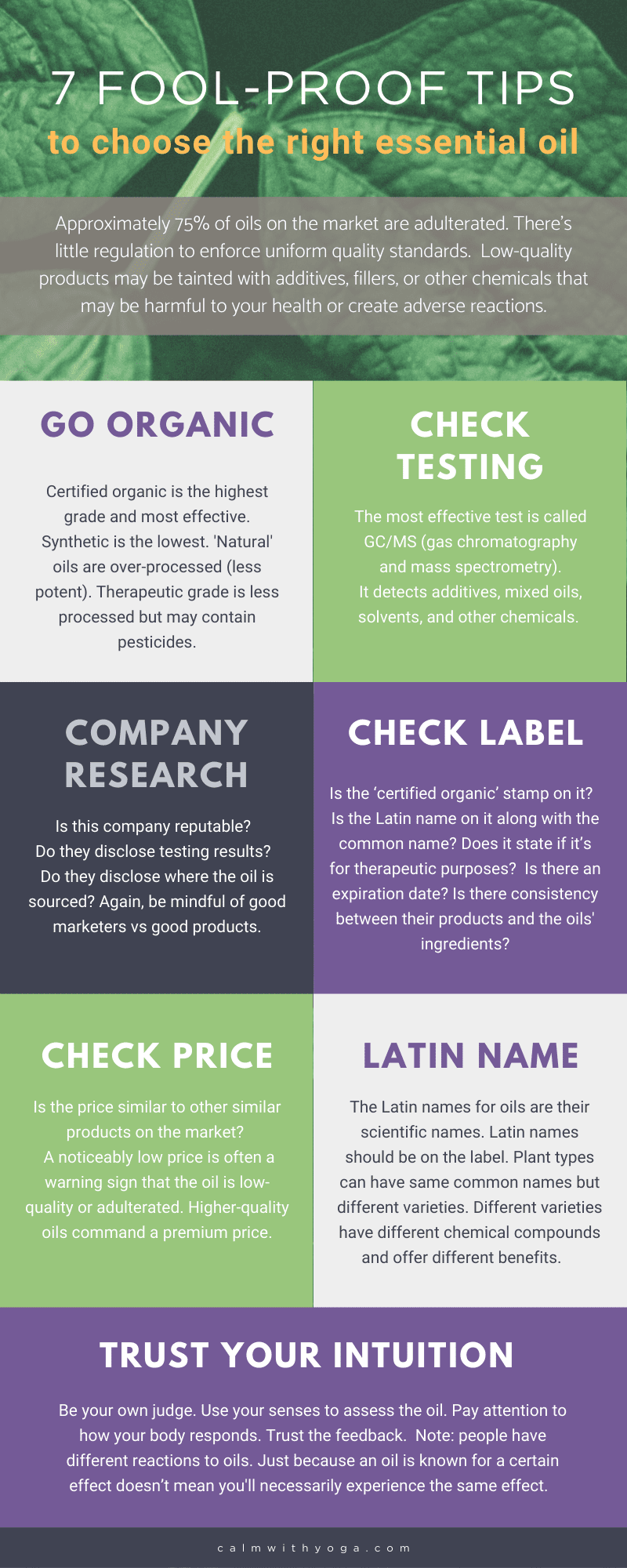Who doesn’t love a good tan or sun-kissed skin, especially during summertime?
While getting your fair share of Vitamin D is essential for health and well-being, excessive sun exposure can often lead to sunburn, especially if you’re fair-skinned.
It’s important to protect your skin by wearing high-quality sunscreen with a high SPF count and being mindful of the time you spend in direct and intense sunlight.
Over time too much UV ray exposure can damage your skin’s DNA and even lead to skin cancer.
Symptoms of Sunburned skin include:
- Warm skin
- Red or pink skin
- Swelling
- Blistering
- Headache
- Fatigue
- Dizziness
Natural Sunburn Remedies & Essential Oils
So what do you do if you overdid the sunbathing?
There are many sunburn remedies you can turn to like aloe vera, apple cider vinegar, cool baths followed by moisturizer lotion, and even hydrocortisone cream to help the pain.
If you’re looking for natural remedies then essential oils may be a helpful addition.
Essential oils (EOs) are highly concentrated plant compounds that are sourced from tree resin, bark, flowers, nuts, seeds, leaves, and stems.
The therapeutic application of EOs is called aromatherapy and if often used in dermatology to treat a variety of skin conditions such as eczema, acne, and even scalp care.
How EOs Work To Soothe & Heal Sunburned Skin
EOs contain many active compounds known to interact with the body and promote positive changes such as accelerated healing and infection prevention.
Because of their efficacy EOs are also used to help boost immunity, treat headaches, manage allergy symptoms, and soothe colds and coughs.
When using EOs as sunburn relief agents you’ll want to use oils that possess the following properties:
- Anti-inflammatory – sunburnt skin is inflamed skin so soothing or cooling the skin is crucial for healing and lessening discomfort.
- Antiseptic – it’s important to keep the affected skin clean and free from bacteria and other microbial agents that may cause infection or slower healing.
- Pain-relieving – Obviously the worse the sunburn the more painful it is so using oils that help lessen the pain is always a plus!
The 4 Best Essential Oils To Treat Sunburns
While there’s currently little research on the efficacy of EOs on healing burns a study published in the Journal of Pediatric Nursing studied two young girls who had similar burn types, medical histories, and treatment. (2)
One girl was treated with a supplemental EOs blend and the other girl was only treated with standard care.
The study found that the girl who used the EOs did not develop any bloodstream infections and was diagnosed with only one hospital-acquired condition.
She was also in the PICU (pediatric intensive care unit) one day less and had a shorter hospital stay by four days.
Though this is promising, more quality research is needed to determine further specific healing mechanisms.
The following are our top four picks for best EOs for sunburns:
Peppermint oil (Mentha piperita)
- Pain reliever
- Antibacterial properties
- Anti-inflammatory properties
- Antiseptic
- Antimicrobial properties
- Anesthetic
Peppermint essential oil is a potent pain-relieving local anesthetic agent that can help reduce discomfort from sunburnt skin.
Its main active compound, menthol, offers a cooling sensation that is soothing to the skin.
Lavender oil (Lavandula angustifolia)
- Pain reliever
- Antibacterial properties
- Anti-inflammatory properties
- Anti-fungal properties
- Antiseptic
- Antimicrobial properties
- Wound-healing & scar-reducing properties
Lavender essential oil is gentle for most sensitive skin types while also being a potent healer of burns and other skin wounds.
Its main active components linaool and linalyl acetate are both known to reduce inflammation and help accelerate wound healing while reducing scarring. (1)
Chamomile oil (Matricaria chamomilla, Chamaemelum nobile)
- Pain reliever
- Antibacterial properties
- Anti-inflammatory properties
- Anti-fungal properties
- Antiseptic
- Antimicrobial properties
Chamomile essential oil is gentle for most skin types, and it’s also very healing and nourishing for the skin, for the gut, and even for your nervous system.
It’s known to help lessen pain and discomfort and help accelerate the healing process.
Tea Tree Oil (Melaleuca alternifolia)
- Pain reliever
- Antibacterial properties
- Anti-inflammatory properties
- Anti-fungal properties
- Antiseptic
- Antimicrobial properties
- Wound-healing & scar-reducing properties
Tea tree essential oil is a highly potent antiseptic so it should be used with care and never applied directly on the skin without diluting with a carrier oil.
It can cause further irritation in sensitive skin types.
When used with care tea tree oil can help accelerate the healing process.
Other possible beneficial oils:
- Geranium
- Frankincense
- Helichrysum
The Pros & Cons of Using EOs For Sunburns
The Pros:
- EOs are potent – a little goes a long way. You just need a few drops to be well-diluted and properly applied to the skin and allow the active compounds to work their healing magic.
- High-quality EOs that are 100% natural ensure that their full therapeutic and medicinal properties work on your skin.
- If you use EOs mindfully and consume them with care, you’ll likely experience little to no side effects like dry or irritated skin.
- You can mix and blend multiple oils to maximize or enhance their skin healing effects.
The Cons:
- EOs are potent – using them incorrectly or in excess can irritate the skin or make your burn worse.
- Many EO products on the market are either diluted, adulterated, or contaminated with potentially harmful synthetic chemicals so its important to do thorough research before applying directly to affected skin.
- EOs aren’t cure-alls. If you have extensive burns or persisting symptoms please contact your doctor before using any oil topically.
- You have to know the adverse potential effects and contraindications for each oil you use. For example, many oils aren’t suitable for pregnant or nursing women or for people with epilepsy.
How To Choose The Right High-Quality EOs For Sunburn Relief
It’s important to know exactly what to look for when choosing the best and highest quality EO.
This is especially true for therapeutic applications like treating sunburns.
Remember that your skin is your biggest organ and whatever you put on it will penetrate your skin cells to eventually make its way into your bloodstream.
You don’t want low-quality oils with questionable chemicals leaching into your body this way.
Here are 7 fool-proof steps to choose the best oils for your skin:
- Look for certified organic therapeutic grade essential oils.
- Check that testing has been done.
- Research the company.
- Check the label.
- Check the price.
- Check the Latin name.
- Check in with yourself.
How To Safely Use EOs Topically
As mentioned, always properly dilute your oils in a carrier oil or other agent when applying them directly to the skin.
This is especially true if you’ve got sensitive skin, a burn, or an open wound.
It’s also a good idea to perform a patch test on a non-affected area and wait 24-48 hours before applying to the affected area.
Make This DIY Soothing Skin Rx Spray For Fast Sunburn Relief
- 1/2 cup of aloe vera gel or juice
- 2 tbsp apple cider vinegar
- 4 tablespoons of fractionated coconut oil or olive oil
- 1 tablespoon of Vitamin E oil
- 4 drops of lavender oil
- 4 drops of chamomile oil
- 4 drops of peppermint oil
- 2-4 drops of tea tree oil
1 – Mix the aloe vera, apple cider vinegar, and coconut or olive oil in a bowl and whisk or use an electric mixer on low speed for about 1 minute to thoroughly combine.
2 – Add the vitamin E oil and essential oils together in a non-BPA plastic spray bottle (dark glass is best.)
3 – Spray on the affected area as needed.
REFERENCES
:
(1) https://www.sciencedirect.com/science/article/abs/pii/S0944711304701804#:~:text=The%20results%20obtained%20indicate%20that,are%20potentially%20anti%2Dinflammatory%20agents.
(2) http://www.pediatricnursing.org/article/S0882-5963(16)30170-1/pdf













